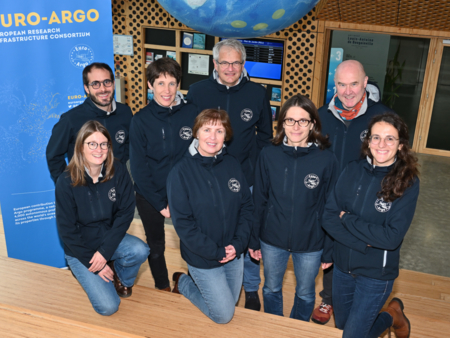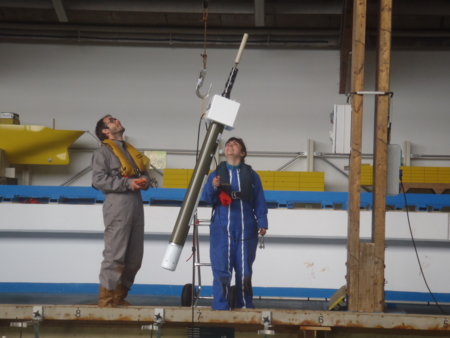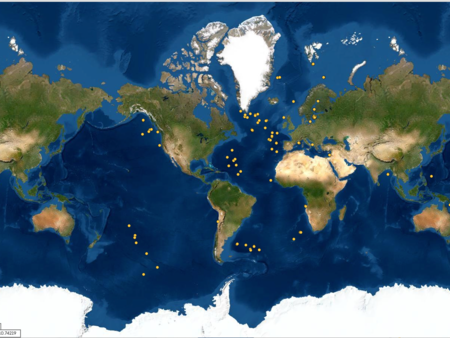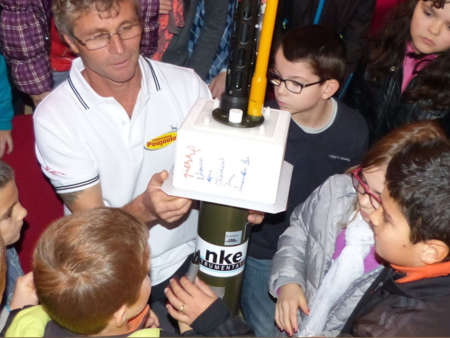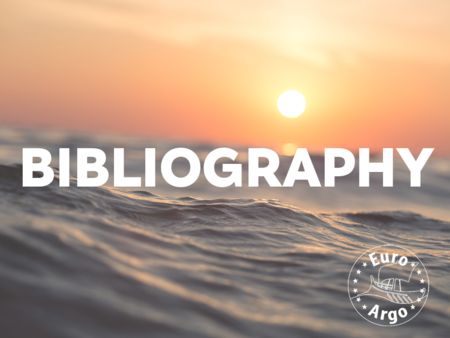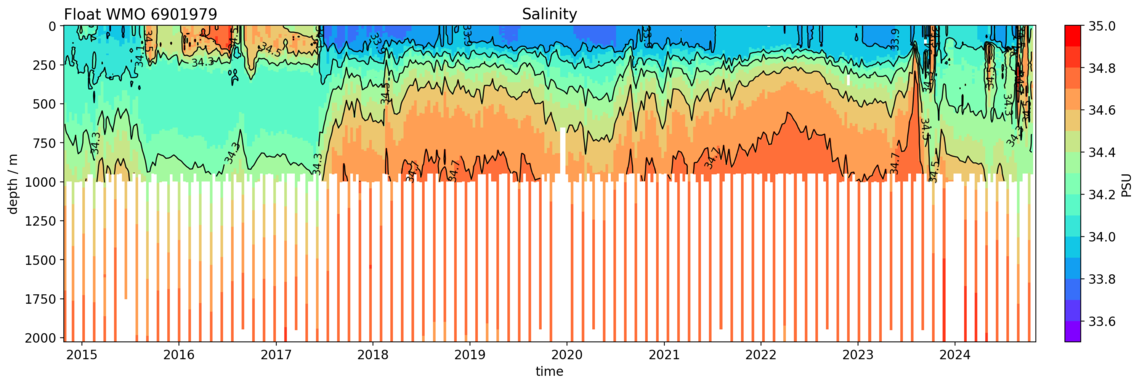Happy 10th birthday to Argo float 6901979!
Today the Dutch Argo float 6901979 celebrates its 10th birthday, about 5 years longer than the average life expectancy of a float. Never since the Royal Netherlands Meteorological Institute (KNMI) joined the Argo program 20 years ago did one of their floats reach this respectable age.
Since KNMI joined Argo in 2004, they deployed 113 floats, 33 of which are still working. Argo float 6901979 is one of eight identical floats that were deployed in the austral summer of 2014/2015 in the southern Atlantic Ocean. One of them disappeared after the first dive, two others died after the average lifetime of approximately four years, and the salinity sensor on four of the five remaining floats stopped working long ago. So, this “birthday child” is really special! Since its deployment on 28th October 2014, it has made 366 cycles down to one kilometre, with every fourth of them down to two kilometres. At the same time, it travelled more than 13 thousand kilometres from the coast of South America to Aus-tralia (see Figure 1).
The long journey of Argo float 6901979
After its launch it performed two loops in a large ocean eddy in the south-east Atlantic (see Figure 1). After more than two years – in 2017, black segment – it escaped from the eddy (see Figure 2). In the eddy the temperature at the surface reached more than 15°C during summer, but in 2017 it barely exceeded 3°C. At the same time, salinity dropped from 34.7 to 33.7 PSU, while the water got much saltier at depth (see Figure 3). This can be considered as a large change in such a short period. After leaving the eddy, the float drifted eastward along 50°S in the strong current circling around Antarctica. At the end of 2021, its path deviated to the south, reaching nearly 60°S, and in 2023 it passed the French island of Kerguelen to the south. Eventually, it returned to a more northerly position, and in 2024 it entered a region of warmer and saltier water to the south of eastern Australia. Temperature and salinity changed several times in this region, showing that this area is populated by warm and cold eddies in succession.
To read more about this news item on KNMI website, click here.
Figure 1: Trajectory of float 6901979. The colours code the year of the respective segment. After its launch in 2014 (red) the float performed two loops (until the end of 2017, in black) in a large eddy, called the Zapiola eddy, east of South America. After leaving the eddy, it drifted eastward along 50°S, deviating southward in 2021 (in black again) to pass Kerguelen (in red and green). Presently, it is south of eastern Australia (in blue).
Figure 2: Temperature as measured along the trajectory. Every ten days the float dives to a depth of one kilometre, and very 40 days to two kilometres. Sometimes the properties – temperature and salinity – of the sea water along the float’s trajectory change abruptly. In the middle of 2017, the water near the surface becomes much colder and less saline, while salinity increases below 250 metres or so. As can be seen from Figure 1, this happens when the float leaves the Zapiola Eddy (black segment).
Figure 3: As Figure 2, but for salinity.

